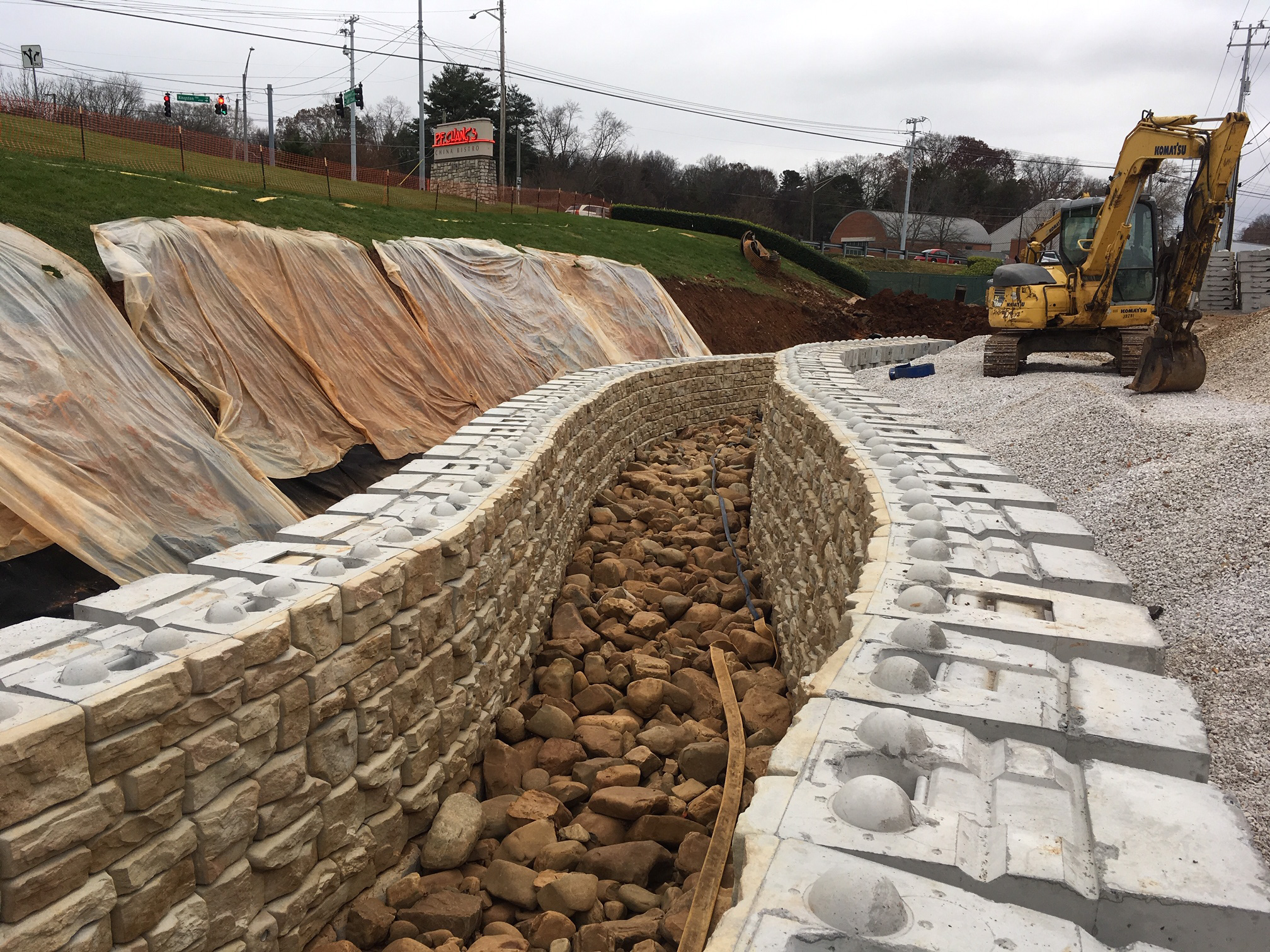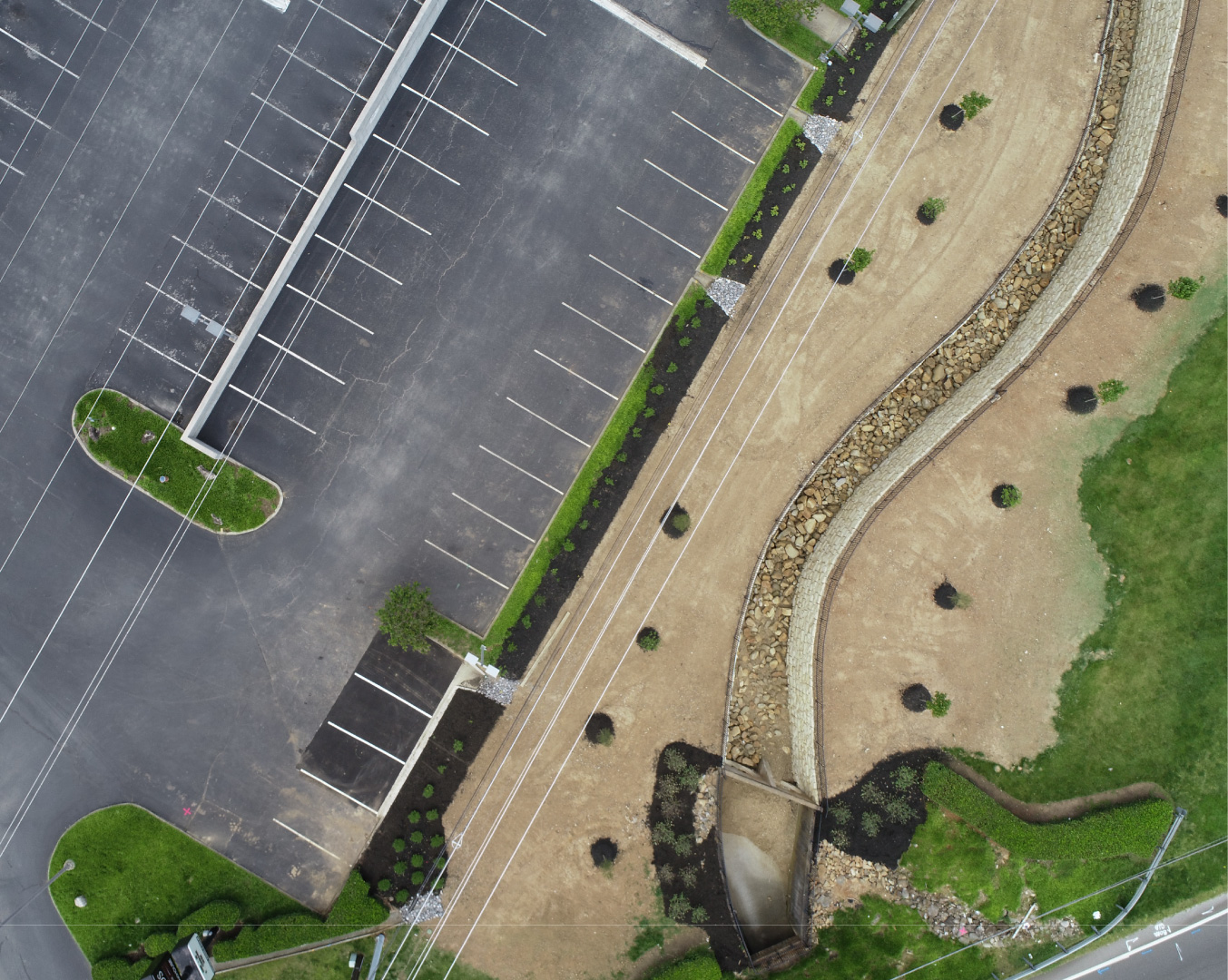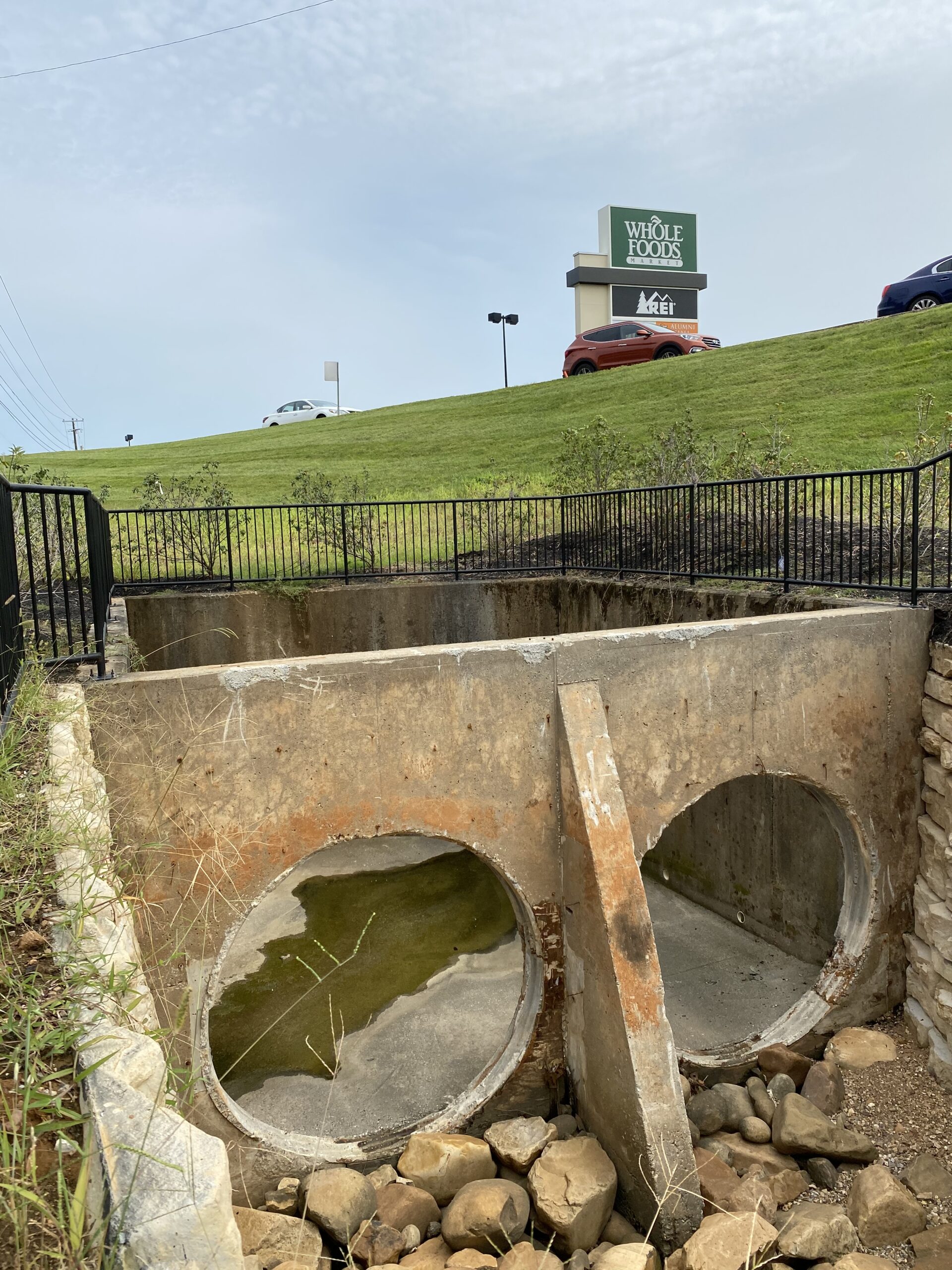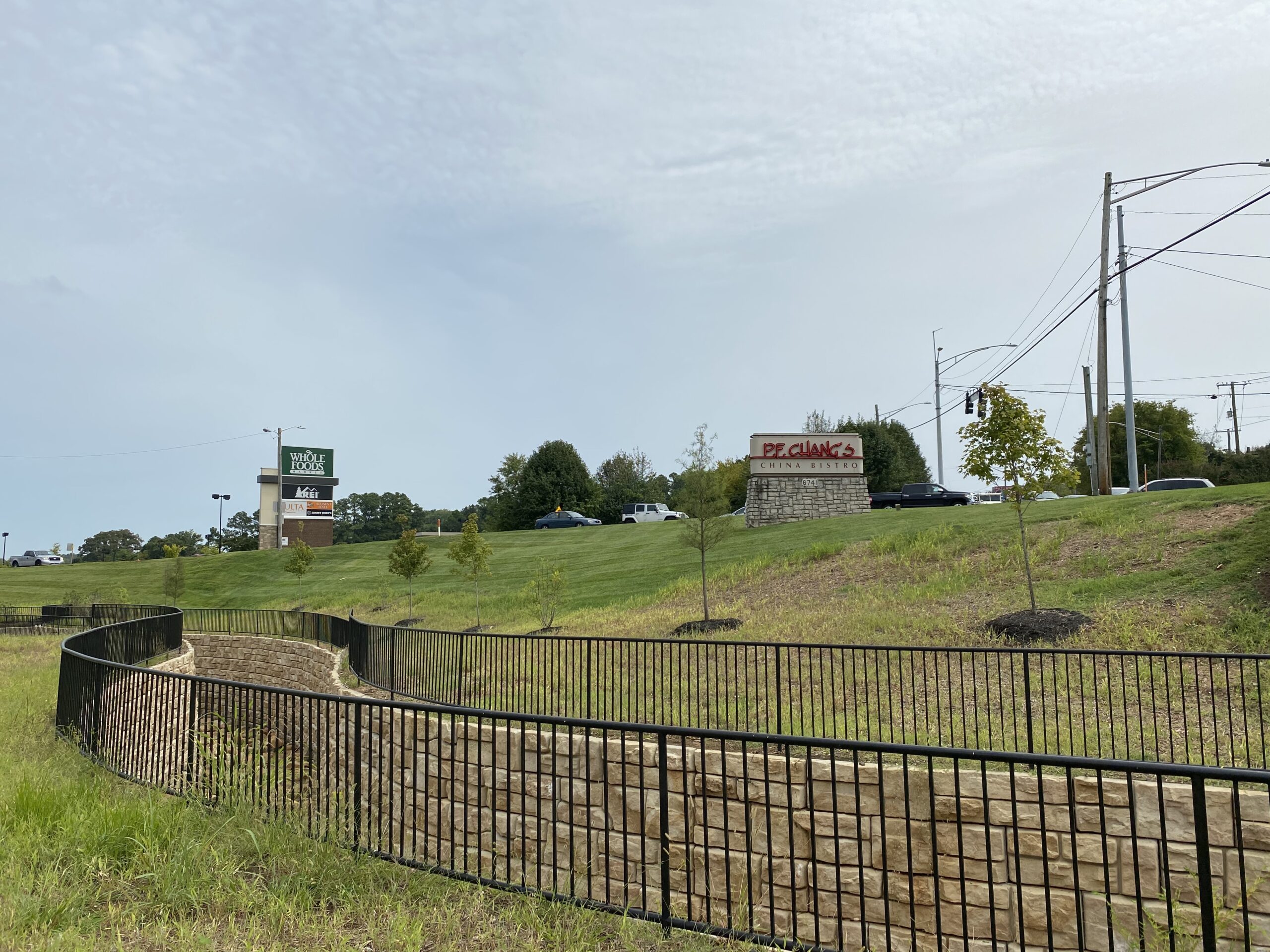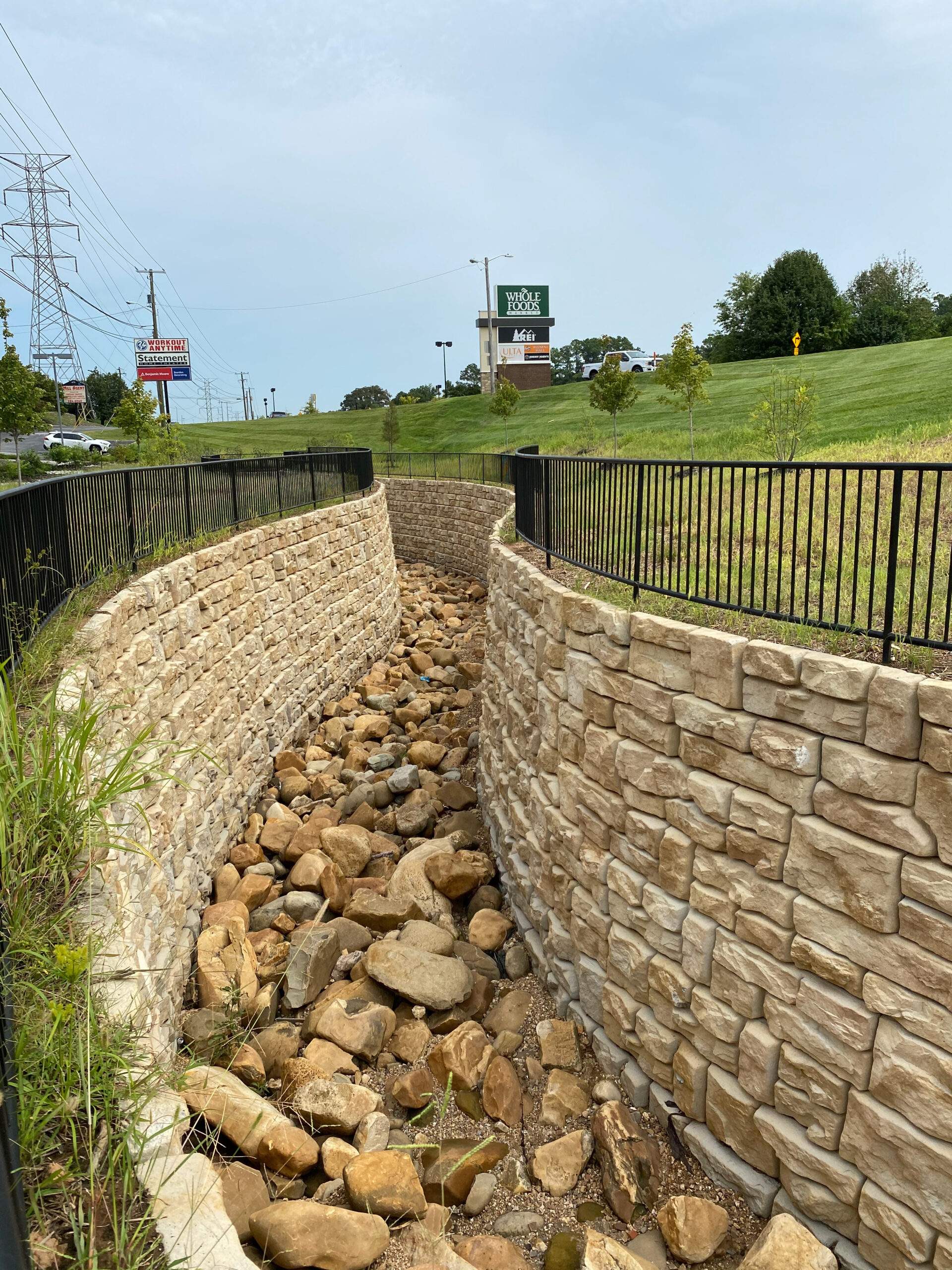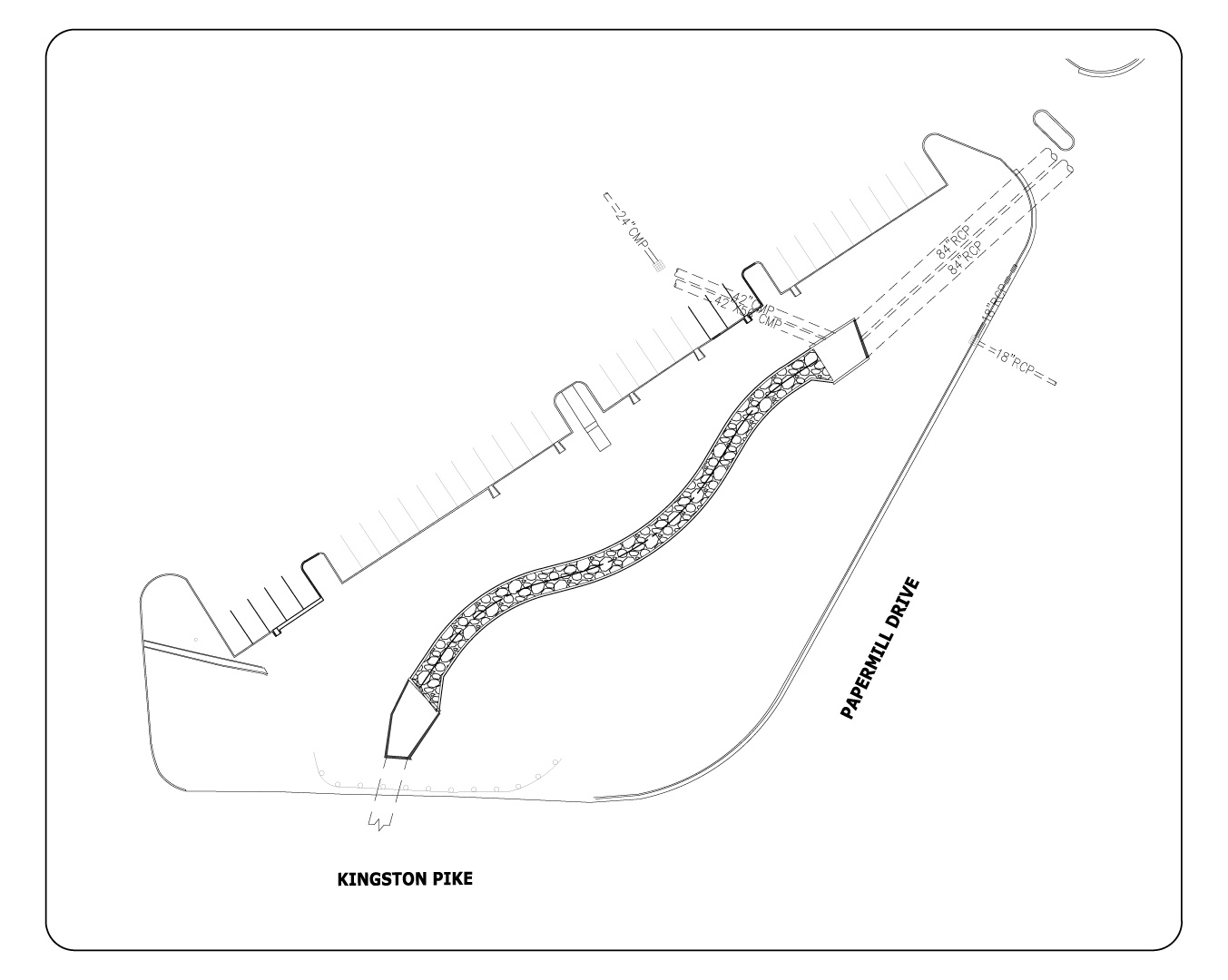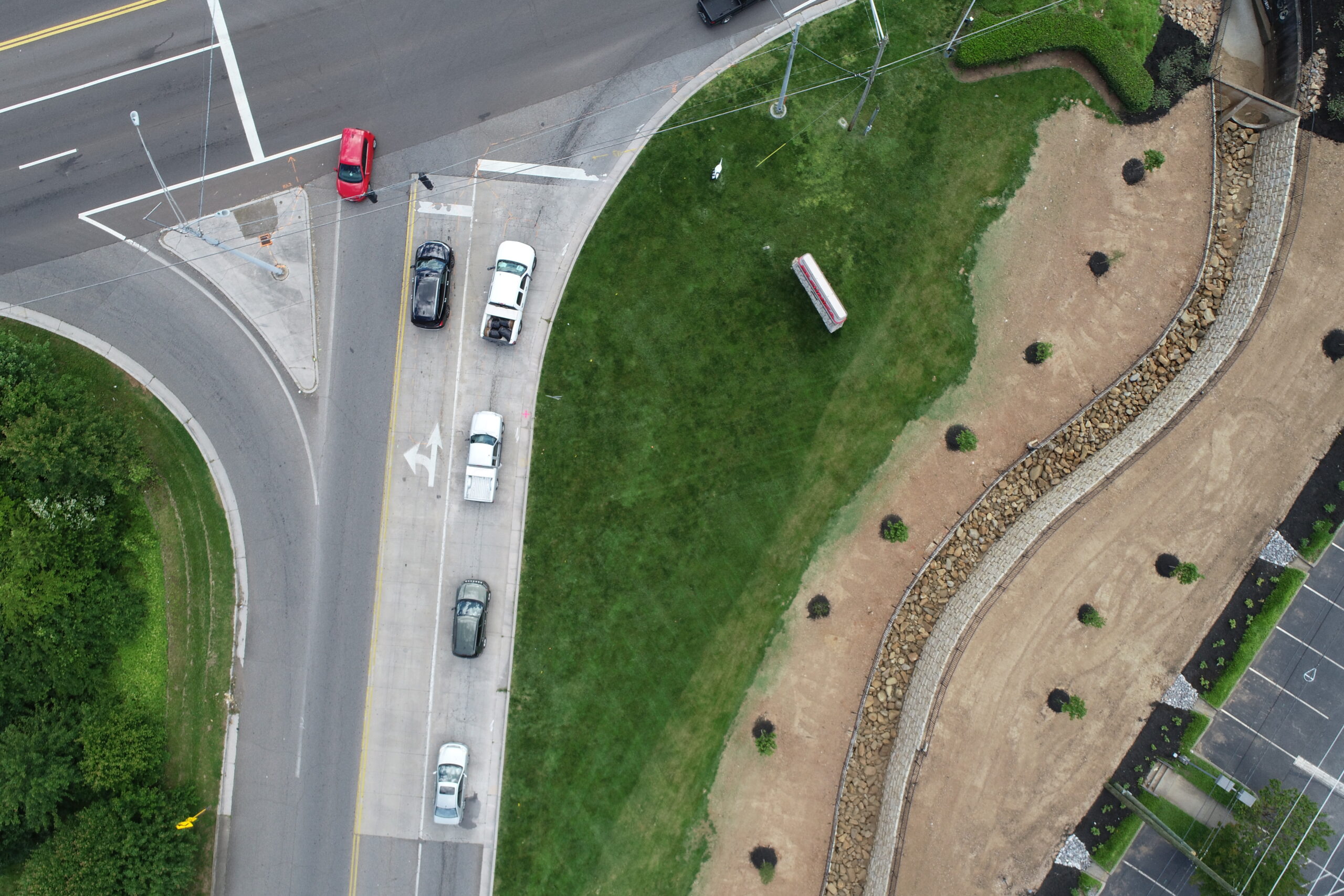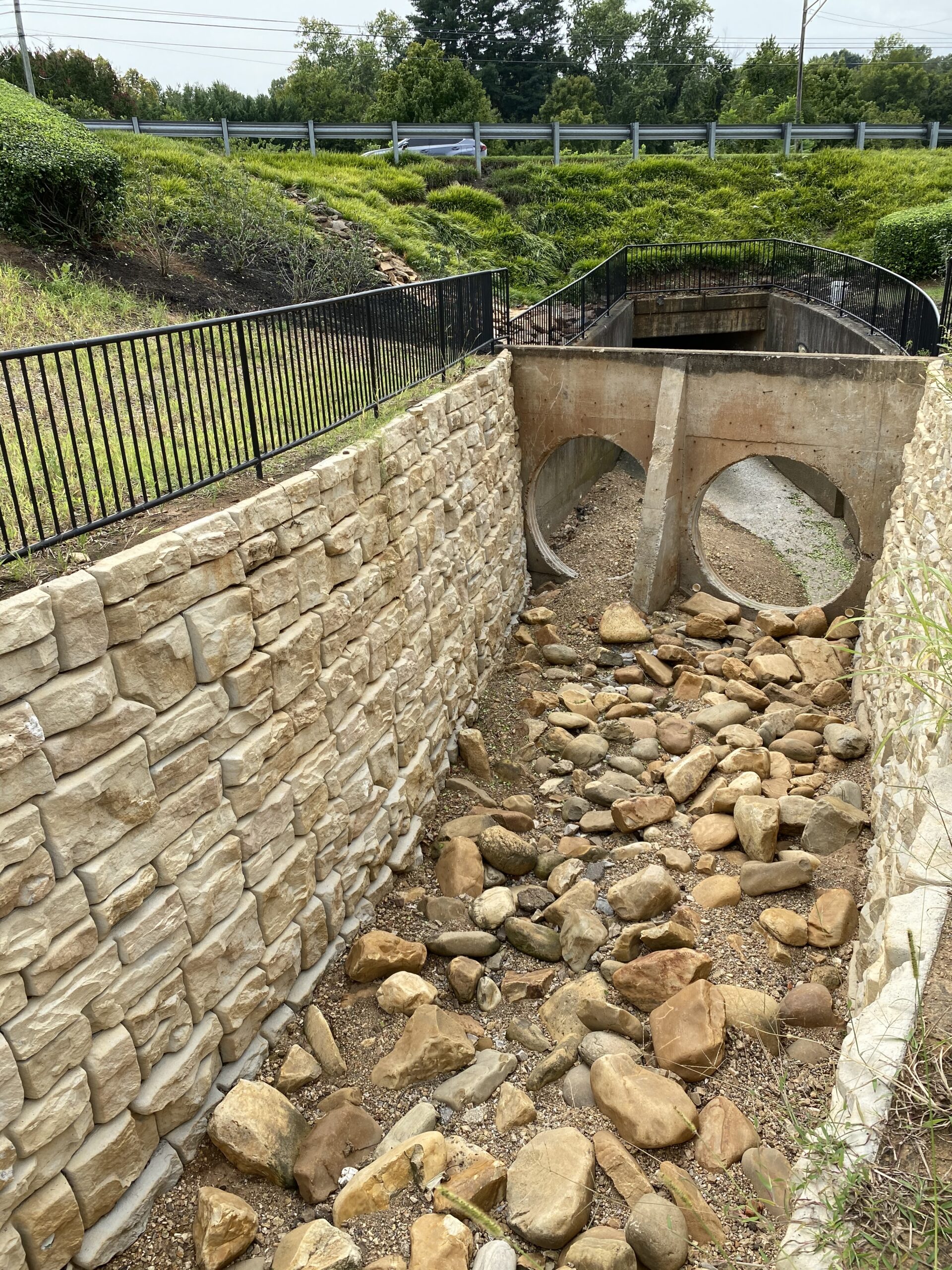During site development, erosion control and slope stabilization ensure the structural integrity and environmental sustainability of engineering projects. These practices are vital for managing soil loss, preventing water pollution, and maintaining the stability of infrastructure. This blog explores the principles, techniques, and practical applications of erosion control and slope stabilization.
Understanding Erosion
Erosion, defined as the displacement of soil, rock, or sediment by natural forces such as water, wind, or human activity, presents a persistent challenge in civil site development. While erosion occurs naturally, construction processes—such as excavation, grading, and vegetation removal—can significantly accelerate it, particularly on sites with steep slopes or unstable soils. For civil engineers, a thorough understanding of erosion’s causes and consequences is essential to design effective mitigation measures.
Causes of Erosion
- Water Erosion: Rainfall, stormwater runoff, and inadequate drainage systems dislodge soil particles, destabilizing slopes and foundations.
- Wind Erosion: Exposed sites with dry, fine soil are susceptible to wind-driven particle loss, compromising stability and air quality.
- Human-Induced Erosion: Construction activities disrupt natural soil structures, increasing vulnerability to erosion if not addressed through proper planning.
Consequences of Uncontrolled Erosion
- Soil Degradation: The loss of topsoil reduces the land’s capacity to support vegetation or future development.
- Water Quality Impairment: Sediment runoff pollutes streams, rivers, and lakes, often resulting in regulatory violations.
- Structural Risks: Erosion undermines foundations, slopes, and retaining structures, jeopardizing project safety and longevity.
The scale of erosion’s impact is significant. The Environmental Protection Agency (EPA) estimates that sediment runoff from construction sites can be up to 1,000 times higher than from undisturbed landscapes (EPA, Construction Site Runoff Control Minimum Control Measure).
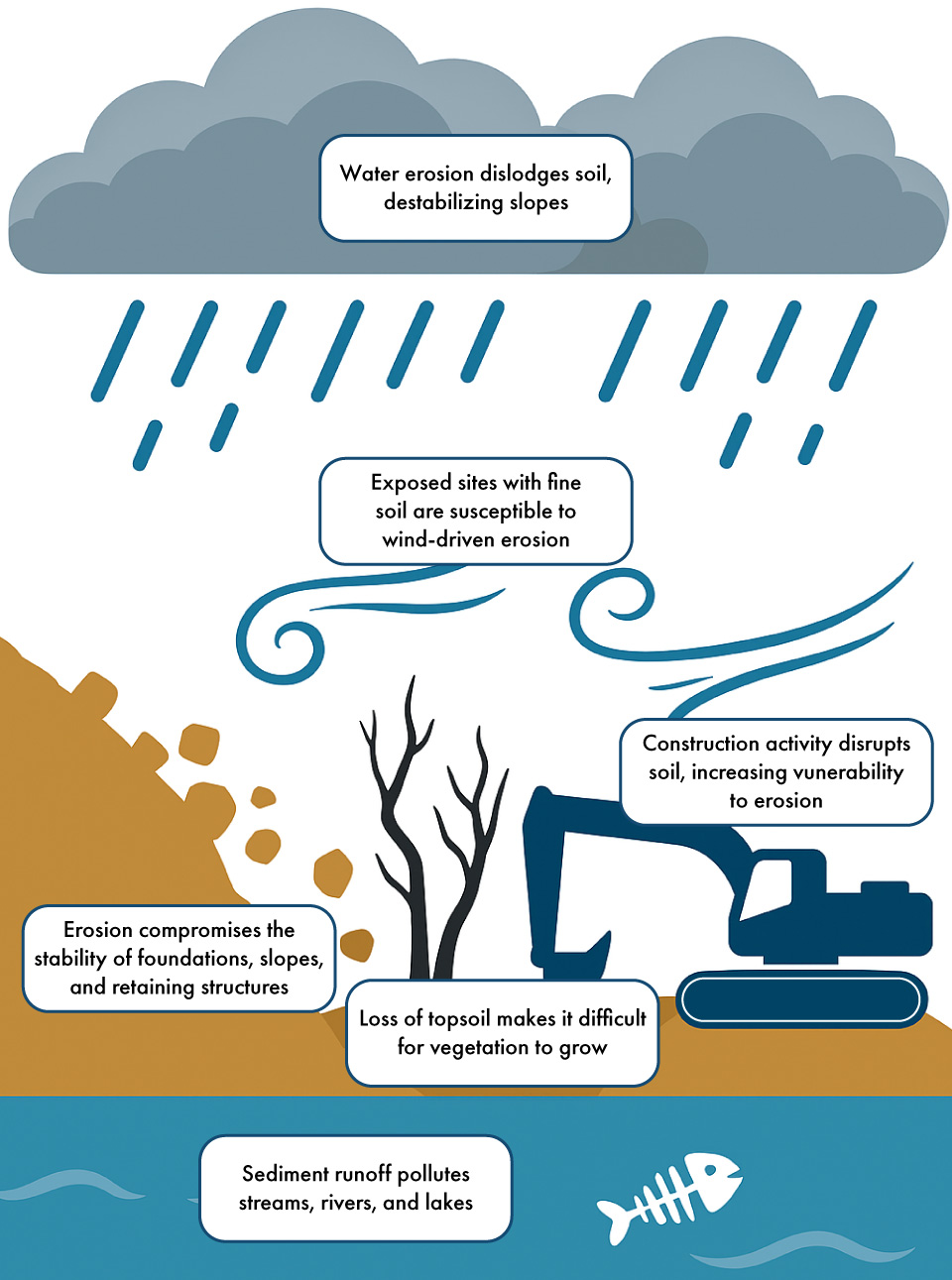
Erosion Control Techniques
Effective erosion control requires a systematic approach, where civil engineers assess site-specific conditions like soil type, slope, and rainfall to develop tailored strategies. Using proven techniques, they prevent soil displacement while safeguarding the area’s water quality, ensuring compliance with environmental regulations and protecting local ecosystems.
Silt Fencing and Sediment Barriers
Silt fences, constructed from geotextile fabric, are designed to trap sediment while allowing water to filter through, reducing the impact of runoff on water quality. They prevent sediment from reaching waterways, where it can harm aquatic ecosystems by increasing turbidity or causing eutrophication, making them a key tool for environmental protection on construction sites. These barriers work best for perimeter control on sites with moderate slopes, such as during road construction or residential development. They’re effective for managing sheet flow but may fail in areas with concentrated, high-velocity water flow.
Erosion Control Blankets (ECBs)
Erosion Control Blankets (ECBs) are biodegradable mats made from materials like straw or coir, protecting bare soil from erosion while encouraging vegetation growth. They shield soil from rain and wind, retain moisture, and stabilize seeds, degrading over time to support long-term vegetative cover for sustained erosion control. ECBs are ideal for steep slopes or areas prone to water and wind erosion, such as highway embankments or riverbanks. They’re often used in restoration projects where quick vegetation establishment is needed to stabilize disturbed soil.
Hydroseeding
Hydroseeding involves spraying a slurry of native plant seed, mulch, fertilizer, and water onto bare soil to rapidly establish vegetative cover and stabilize surfaces. The mulch protects seeds from erosion and retains moisture, while fertilizer boosts growth, creating a dense root system to anchor soil against water and wind erosion. This method is perfect for large, exposed areas needing quick stabilization, like highway slopes, mine reclamation sites, or post-wildfire zones. It’s a cost-effective way to cover vast areas where manual seeding isn’t practical, often establishing grass in 7–14 days.
Riprap and Gabions
Riprap, made of large stones, and gabions, stone-filled wire baskets, dissipate water energy and reinforce soil to prevent erosion. Riprap absorbs the force of flowing water, while gabions provide structured support, making them effective for stabilizing soil in high-energy environments like riverbanks or drainage channels. These techniques are recommended for high-flow zones, such as riverbanks, culvert inlets, or drainage outlets, where strong currents can erode soil. They’re also used in coastal areas to combat wave action or in mountainous regions to protect streambanks.

Erosion Control Techniques: From left to right, silt fencing, erosion control blankets, hydroseeding, gabions.
Slope Stabilization: Ensuring Structural Integrity
Slope stabilization complements erosion control, particularly on sites with significant topographic variation. Unstable slopes increase the risk of landslides, threatening both infrastructure and safety. Civil engineers employ the following methods to reinforce slopes and prevent failures:
Retaining Walls
Retaining walls are robust structures designed to counteract the lateral pressure of soil, preventing downslope movement and stabilizing slopes. By holding back earth, they protect against erosion and landslides, ensuring the safety of areas above and below the wall, especially in regions with significant elevation changes. These walls are suitable for steep slopes supporting critical infrastructure, like highways, railways, or buildings, where soil movement could cause structural failure or safety hazards. Common types include gravity walls, which rely on their mass for stability (e.g., concrete blocks); cantilever walls, supported by a base slab for taller structures; and anchored walls, reinforced with cables or rods for added strength in challenging conditions.
Geosynthetics
Geosynthetics, such as geotextiles and geogrids, enhance soil strength and load-bearing capacity by providing reinforcement and improving stability. Geotextiles filter and separate soil layers, while geogrids distribute loads, reducing the risk of settlement or erosion in weak soils. They are often used in construction projects where soil conditions are poor, ensuring a solid foundation for infrastructure.
Vegetation and Bioengineering
Vegetation and bioengineering use plant roots to anchor soil, while foliage slows runoff velocity, minimizing erosion. This natural approach not only stabilizes soil but also enhances biodiversity, filters pollutants, and reduces surface water runoff, offering a sustainable erosion control solution. Appropriate for moderate slopes requiring sustainable stabilization, such as riverbanks, parklands, or highway medians; it’s ideal for projects prioritizing ecological benefits alongside erosion control.
Soil Nailing
Soil nailing involves inserting steel rods (nails) into slopes and grouting them to create a cohesive, reinforced mass. This technique strengthens the soil, preventing movement and erosion by tying the slope together, offering both temporary and permanent stabilization. It’s used for steep cuts, such as in highway excavations, building foundations, or tunnel portals, where space constraints prevent gentler slopes. Soil nailing is versatile for both short-term construction support and long-term slope stability.

Slope Stabilization Techniques: From left to right, retaining wall, geogrid, vegetation, soil nailing.
Erosion Control in Practice
The P.F. Chang’s Drainage project addressed critical drainage and erosion challenges at a congested urban intersection. This project focused on replacing two deteriorating 84-inch Corrugated Metal Pipes (CMP) under a parking lot. The site, constrained by adjacent commercial buildings, roadways, intersections, surface parking, and utility conflicts, required careful management to mitigate flood risks and stabilize the area. CCI collaborated with the City of Knoxville, FEMA, TDEC, and TDOT to ensure compliance with regulatory guidelines while improving the site’s drainage and visual appeal.
An extensive drainage study of the FEMA Floodway was conducted, modeling both existing and proposed conditions to assess the impact of replacing the 84-inch pipes. Instead of traditional pipe replacement, CCI designed a “green alternative” open channel—a 10-foot-wide design aimed at reducing erosion through natural flow management. This solution was developed after evaluating multiple options to balance functionality, aesthetics, and environmental impact.
This approach mitigated erosion and flood risks at the site while enhancing the area’s stability and appearance. The green open channel replaced the deteriorating pipes, providing a sustainable solution that improved drainage and reduced runoff-related erosion within a challenging urban context.
Erosion control and slope stabilization are foundational to civil engineering, enabling professionals to safeguard against soil loss, structural instability, and environmental degradation. Are you working on a site that requires expert erosion control solutions? Contact us today to discuss how we can support your project with tailored strategies. Want to see our work in action? Explore our Projects to discover how we’ve successfully tackled engineering challenges across diverse sectors.

